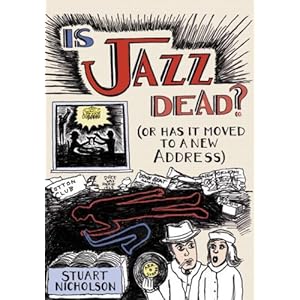Well, on the sidebar there's Eliane Elias on YouTube !!!!
Last year there was a new Cd:
It was not a good release from both musicians, I was not happy with the results.
Metheny & Mehldau

by Thom Jurek
The collaboration between Pat Metheny and Brad Mehldau is something that must have been written in the stars. Fans of both men have wondered if it would ever take place, and the end result on the Nonesuch release of Metheny/Mehldau is the confirmation that it was destined. Hyperbole? Put it on and listen before you offer that remark seriously. Of the ten cuts here, eight are duets; the other two feature Mehldau's rhythm section, bassist Larry Grenadier and drummer Jeff Ballard. Metheny wrote seven of these tunes, and Mehldau wrote the other three. Each man's compositional style is evident from the word go. There's the luxurious counterpoint that extends form the haunting melody of "Unrequited." Further, there is the natural extension of rhythm and swing on "Ahmid-6." But the real accomplishment here is the ease with which these men play such sophisticated and engaging music that is, perhaps on paper, difficult. But its expansive sense of lyricism and yes, rhythmic interplay, is continually surprising; there is no competition in these tunes, they flow, one into the other with a language being made on the spot. On the quartet tunes, such as Metheny's "Ring of Life," the influence of postmodern drum'n'bass -- à la electronica -- is heard in the tough breakbeats played by Ballard and the counter-rhythmic invention of both Mehldau and Grenadier. It is Metheny's melodic voice, his continually approaching the euphoric, that holds it all together and makes something utterly moving out of it. The gentle swing of "Say the Brother's Name" (also by Metheny) takes Mehldau's sense of the phrase and expansive left-hand technique as it finds harmonic invention in the middle register as the key to unlocking the track's mystery. Mehldau's typically understated solo splits the seam and allows the genuine intensity of the cut to come through. Rhythmically there are breaks here too, but not as pronounced or as forceful as on the earlier selection. Indeed, when all is said and done, the listener is left wanting -- more that it. One wishes that a double album would have been made, one with the duet -- so full of startling moments it's impossible to list them all -- and quartet, whose genuine sense of extrapolative swing is not only inherent, but infectious.
This year came out the rest of the tracks from that session:
What a good CD !!!!
How can I explain the difference ?? Who cares ???
Just enjoy !!!!!!!
Metheny/Mehldau - Quartet
![Cover (Quartet [2007]:Pat Metheny)](http://image.allmusic.com/00/amg/cov200/dri400/i442/i44201a2u80.jpg)
by Thom Jurek
Guitarist Pat Metheny and pianist Brad Mehldau created a stir in 2006 with their wonderful duet recording. On that set, two of the album's ten cuts featured Mehldau's rhythm section of bassist Larry Grenadier and drummer Jeff Ballard. Quartet is a mirror image: seven of these 11 cuts are full quartet sides. The musical magic established by that collaboration sets the stage for the pair to dig deeper here. It's true that melodic and harmonic invention is the root of each of the tunes here, though that doesn't mean there isn't room to move.Metheny's Way Up recording offered ample of evidence of how compositional sophistication could accomplish virtually anything. There, the players had written parts, but also had room for improvisation within that framework. The same happens here, though the pieces are shorter. Partial evidence of this is the disc's second selection, "The Sound of Water," which has a nearly pastoral theme. But Metheny uses counterpoint on a 12-string guitar to meet Mehldau's chordal investigation. One need only go one cut further in on "Fear and Trembling," by Mehldau, to see how quickly the two can step outside their bonds while retaining their commitment. The knotty playing with distortion by Metheny moves toward the rhythm section, which establishes the kind of fluidity his sense of time requires.Mehldau's own post-bop modal solo works through the lyric frames in the tune's structure and cuts through them, finding their densities and spaces. Grenadier's elasticity as a bassist allows the time to float and shift -- seemingly -- without ever losing the harmonic thread even when Metheny moves outside toward the end of the cut.
The duet ballad "Don't Wait," with Metheny on acoustic guitar, comes together with all the warmth and textured lyric sensibility that their debut displayed. These two men are not at all self-conscious here; they seem to hear each other in both solo and chorus with equally gentle ears. The shimmering piano on "Towards the Light" finds Mehldau exploring those gorgeous multi-note phrases he loves so much, with Metheny reacting sparely and creating a virtual shimmering in the cut. Ballard is very impressive here as he shades his beats with cymbals and rim shots, and gives the entire cut something earthy to hang onto. There are two Latin-tinged (barely) tunes, "En la Terra Que No Olvida" (Metheny) and "Santa Cruz Slacker" (Mehldau). The former is knottier and less obvious, but the meter is one Brubeckemployed a lot in the early '60s and perhaps it serves as a model here. The latter cut is more languid on the surface, but Ballard's drumming is simply out of this world as he skitters and scampers all over and in front of the band throughout. There is perhaps no surprise at how well these two communicate -- especially with a rhythm section as wonderful as this one is. If there is a feeling that some tunes run together, they don't; this is not a suite, but a solid amalgam of brilliant musicianship, with a humble approach that is elegant and dignified. These guys have come up with a gorgeous and sexy creation, and listeners should be delighted to spend some time with it.





